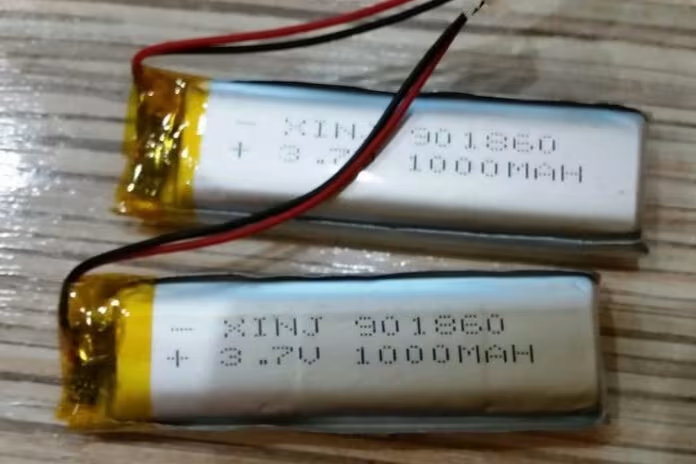- The Evolution of Search Coil Technology: From Simple Circles to Smart Sensors
- The Foundation: Understanding Search Coil Basics
- From Concentric to Double D Search Coils: A Quantum Leap
- The Size Paradox: Bigger Isn't Always Better
- Material Science: The Unsung Hero
- The Digital Revolution in Search Coil Technology
- Look Ahead: The Future of Search Coils
- Conclusion: The Continuing Evolution
The Evolution of Search Coil Technology: From Simple Circles to Smart Sensors
I recall the first time, about twenty years ago, I opened up a metal detector’s search coil in my workshop. The simple arrangement of copper wire windings almost looked primitive compared with the sensor arrays used today. Yet that crude design principle-electromagnetic induction through carefully arranged coils-remains at the heart of even our most advanced detection systems. The evolution of search coil technology does have an interesting history of how incremental innovations can transform an entire industry.
The Foundation: Understanding Search Coil Basics
Search coils may look deceptively simple, but they reflect several decades of refinement in both electromagnetic theory and practical engineering. Consider the eyes and ears of any metal detector, transmitting electromagnetic fields into the ground and receiving the subtle changes caused by metallic objects. In that case, their dual role makes their design quite tricky because a compromise in either one of the functions affects the performance of the whole detector.
From Concentric to Double D Search Coils: A Quantum Leap

The early days of metal detection saw concentric search coils, typically featuring windings that were nested in a series of circular patterns. While decent in ideal conditions, they were apt to suffer performance decrease in mineralized soil and did not show good depth penetration. I’ve spent a lot of time testing different coil configurations, and the advent of the Double-D was indeed a breakthrough.
The Double-D coils, with their overlapping D-shaped windings, cured many of the ills of earlier designs. They offer superior stability in mineralized soil, achieve far greater depth, yet remain sensitive to smaller targets. This wasn’t incrementally better, but a fundamental shift in what could realistically be accomplished in tough searching.
The Size Paradox: Bigger Isn’t Always Better
One of the most enduring legends in the field of metal detection is that the bigger the search coil, the better the performance. Reality is considerably more subtle. After many years of practical field testing, we have learned that coil size actually involves a delicate balance among various conflicting factors:
Larger coils do a better job detecting larger objects much deeper and sweep larger areas with each pass. However, they do sacrifice some sensitivity for the little things and can get cumbersome in tight places or rough terrain. Smaller coils, though limited in depth, have better sensitivity to tiny things and yield a better target separation in trash-laden areas.
Contemporary detectorists often carry coils in a range of sizes, selecting the appropriate tool for the specific conditions and target under survey. This will become increasingly important as detection activities increase in their diversity of application.
Material Science: The Unsung Hero

But now, while much attention is focused on coil configuration and size, improvements in materials science have been quietly revolutionizing the performance of the search coil. Modern coils boast increasingly sophisticated shielding materials and advanced polymers that reduce interference and improve durability. Development of weatherproof housings and improvements in wire insulation have made all-weather detecting a practical reality.
I have tested coils in everything from desert heat to arctic cold, and continue to be amazed by the hardness of modern materials. Such improvements allow detectorists to work harder and longer with the equipment, thus opening more professional opportunities for its use.
The Digital Revolution in Search Coil Technology
Digital technology integrated into the coils has expanded the performance envelope possible by any one metal detector. It is now common for modern smart coils to house sophisticated signal processing right at the source, before environmental noise can corrupt the signal. This in-coil processing, together with advanced ground tracking algorithms, makes today’s detectors more capable than any previously experienced.
With the development of frequency-shifting technology, it’s now possible for modern coils to operate at several frequencies simultaneously and provide unparalleled target information not available with traditional analog designs, thus opening up new avenues for target identification and discrimination.
Look Ahead: The Future of Search Coils

Looking ahead, it is clear that a number of emerging technologies will further extend the capability of search coils. Research into quantum sensors hints at the possibility of picking up targets at unprecedented depths, while advances in materials science are yielding new core materials and shielding techniques, which may mean coil design once again undergoes a sea change.
Perhaps the most exciting development is that of smart coils that can adjust their characteristics in real time, from one ground condition to another, depending on ground conditions and target responses. These adaptive systems represent a fundamental shift from static to dynamic detection technology.
Conclusion: The Continuing Evolution
Far from being the end of the story of search coil technology, every new development opens up possibilities previously unimaginable. I have watched this evolution and am convinced that another quantum leap in the development of detection technology is at hand.
The challenge now lies in how to balance such technological advancement with practical usability. The best technology in the world means nothing if it is so complex or cumbersome that it cannot be used effectively out in the field. This balance will indeed be of great instrumental importance in driving further progress within the confines of the field through search coil technology.

My name is Paul and I am the founder of Detector For Metal, a dedicated resource for metal detecting enthusiasts seeking to uncover historical treasures and connect with the past using the latest technology. As a stay-at-home dad and family man, I’ve found metal detecting to be the perfect hobby that combines family adventure with historical learnings for the whole family.
As a father, I’m deeply committed to passing on this hobby to the next generation of detectorists, starting with my own children. I share advice on everything from metal detecting with kids to exploring the top 10 metal detecting sites you never thought about. My methodical approach to the hobby goes beyond the thrill of discovery—it’s about creating family traditions while preserving history and sharing the stories of those who came before us.


